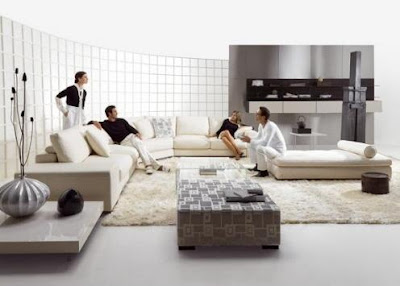 Of all the furniture designers that emerged from Denmark during the 20th century, Kaare Klint was the only one that was born the century before. Born in 1888, the son of P.V. Jensen Klint, an eminent architect of the early 20th century, the younger Kaare Klint worked first as an architect before moving on to furniture design. In 1924 he founded the Danish Academy of Art and became the first professor the school ever had in furniture. He was also the first lecturer in Furniture Design at Copenhagen’s Royal Academy of Fine Arts.
Of all the furniture designers that emerged from Denmark during the 20th century, Kaare Klint was the only one that was born the century before. Born in 1888, the son of P.V. Jensen Klint, an eminent architect of the early 20th century, the younger Kaare Klint worked first as an architect before moving on to furniture design. In 1924 he founded the Danish Academy of Art and became the first professor the school ever had in furniture. He was also the first lecturer in Furniture Design at Copenhagen’s Royal Academy of Fine Arts.
As a professor and lecturer, Kaare Klint had a huge hand in shaping many of the most well known furniture designers to come out of Denmark. He was a mentor and collaborator of Finn Juhl, whose own style was completely opposite of Kaare Klint with the exception of Shaker furniture, which both men admired greatly. Instead of embracing the modernism movement like many of his contemporaries out of France and Germany, Kaare Klint went back to the simple and elegant designs that had worked for generations. He found inspiration in Chippendale, Biedermeier, Far Eastern style, and, of course, American Shaker. His furniture, designed in the classic style but with proportion studies thrown in, fit in the everyday lives of both Danish and international homes.
Kaare Klint encouraged himself and his students to study the styles of the past and learn from them, making it a point to truly see how the pieces were constructed and how they didn’t lose their functionality. He studied drawings of human requirements for sitting comfortably while being supported and how the functions of the human body worked and then designed furniture around that study, keeping them beautiful without losing their function. A perfect example of this ideal is the 1933 teak deck chair he designed, retaining functionality, providing the maximum amount of comfort possible and remaining a clean, elegant piece. Kaare Klint was a leading expert on ergonomics during his time, and quite possibly the first expert on it.
His pieces had to show the highest quality craftsmanship and he preferred the aesthetic look wood gave to a piece, completing it in his eyes. It didn’t matter what he designed. Each piece was to serve a function. Many of his pieces were based on English furniture from the 1700s, Shaker prototypes, and pieces from Southern Europe. He made them modern by refashioning the entire object and then simplifying it to make a truly unique and modern piece of furniture. He used the services of cabinet maker Rudolf Rasmussen who worked with mahogany, a favorite medium of Kaare Klint's. Kaare Klint liked the way it looked and how it could be shaped. Additionally, he made sure every small detail of the piece was perfect, from the brass fittings to the hand-woven coverings and leather.





0 comments:
Post a Comment